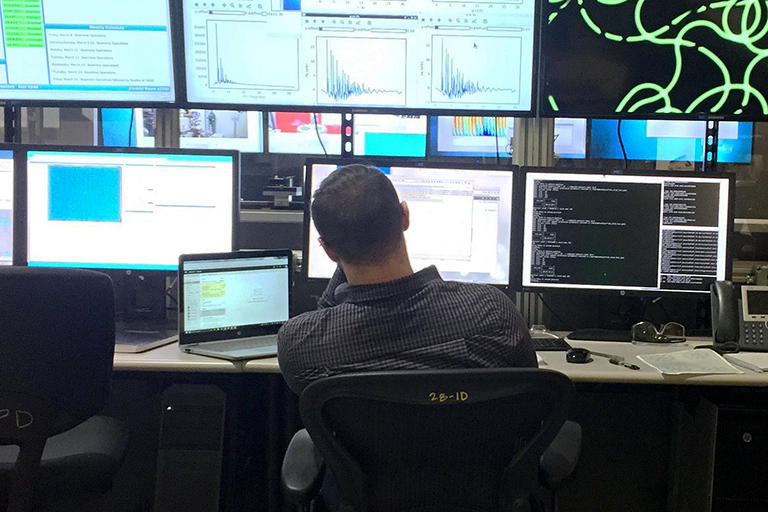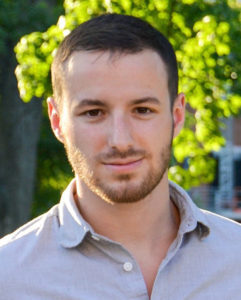
William Cureton working in a glove box processing radioactive materials in order to fabricate fuel for testing.
This summer, two nuclear engineering doctoral students were able to experience internships that advanced their specific fields of research.
Will Cureton, whose research focuses on characterizing and mitigating damage induced by extreme conditions such as radiation, temperature, and chemical extremes, interned on a project at NASA Marshall Space Flight Center that focused on developing fuel for nuclear thermal propulsion applications.
With increased interest in manned missions to Mars, NASA is pursuing methods of propulsion that can reduce transit times, thus decreasing the negative effects of space on astronauts like harmful space radiation and psychological effects of inhabiting a spacecraft for extended periods of time. Nuclear thermal propulsion systems can achieve this goal due to higher efficiency, which can reduce transit times by a factor of two.
—Will Cureton
The results of this study will assist NASA by providing insight into the performance of nuclear fuel under these conditions in order to continue to develop materials by employing strategies to mitigate the observed damage and enhance the performance of nuclear thermal propulsion systems.

Devon Drey in the middle of a 24-hour measurement in the control area for the XPD Beamline at NSLS-II.
Doctoral student Devon Drey spent the summer interning at the National Synchotron Light Source II at Brookhaven National Laboratory. The focus of Drey’s research is characterizing and understanding the defects observed in nuclear fuel and nuclear waste materials.

Devon Drey
Such materials undergo changes as they are subjected to radiation, chemical evolution, and temperature extremes. Drey used neutron and X-ray total scattering facilities at UT, Oak Ridge National Laboratory, Brookhaven National Laboratory, and Argonne National Laboratory to better understand these changes, which are important to the proper function of these materials.
A Nuclear Energy University Program Fellowship gave him the opportunity to spend the summer at the National Synchrotron Light Source II at BNL as a graduate student intern to learn how to use the X-ray Powder Diffraction beamline.
“During my time there, I learned how to properly utilize these highly advanced facilities from the beamline scientists, people who changed the way I look at my professional interactions and research,” he said. “The knowledge I gained and connections I made during this internship will stay with me for the rest of my life.”